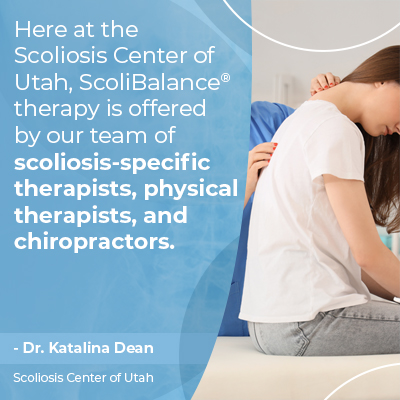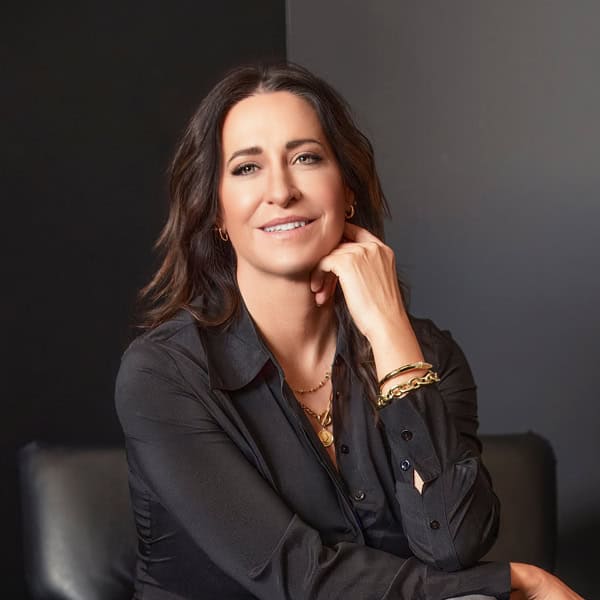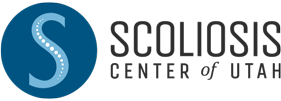Blogs
9 Exercises for an Effective Scoliosis Workout Program

While general exercise programs can help maintain general spinal strength and flexibility, as well as keeping the abdominal muscles and back muscles strong, when it comes to the corrective potential of scoliosis exercises, these need to be scoliosis-specific, prescribed by a specialist, and combined with other types of corrective treatment.
Scoliosis-specific exercises are part of a conservative treatment plan, but exercises have to be designed by a scoliosis-specific physical therapist and approved by the patient’s treatment provider. Exercises for scoliosis have to be customized to address the specifics of a patient’s posture, symptoms, and curve type.
Before getting to specific exercises for scoliosis, let’s start with the general benefits of scoliosis exercises.
The Power of Exercise for Scoliosis Patients
When first diagnosed, many scoliosis patients wonder if they will be able to stay as active and continue participating in certain sports and activities.
While staying active is important for everyone, for those with scoliosis, it can be an essential part of a leading a spine- and scoliosis-friendly lifestyle, and when exercises are scoliosis-specific and combined with other types of treatment, corrective results can be within reach.
There was a time when the power of scoliosis exercises was underestimated, but the success of non-surgical scoliosis treatment and exercise-based approaches to scoliosis treatment show just how beneficial it can be.
ScoliBalance Therapy
 Here at the Scoliosis Center of Utah, ScoliBalance® therapy is offered by our team of scoliosis-specific therapists, physical therapists, and chiropractors.
Here at the Scoliosis Center of Utah, ScoliBalance® therapy is offered by our team of scoliosis-specific therapists, physical therapists, and chiropractors.
ScoliBalance® involves customizing scoliosis exercises and stretches to address patients’ symptoms, posture, and curve types, and the therapy can help with slowing/stopping progression, reducing scoliosis curves and reducing pain, improving the spine’s flexibility, alignment, balance, stability, the spine’s surrounding muscle balance and strength, and posture.
A spine that’s surrounded by strong healthy muscles has help maintaining its alignment and healthy curves, while a spine that’s surrounded by weak and/or unbalanced muscles (an effect of scoliosis) is one that’s likely to become more unbalanced and unstable over time.
A misaligned spine doesn’t just affect the spine and its immediate surroundings, but also the entire body as it can disrupt its alignment from the head to the feet.
And as a progressive condition, the nature of scoliosis is to get worse, so it’s important that patients are empowered with the tools and awareness they need to hold treatment results, which is why the use of mirror-image exercises can be so helpful to facilitate postural awareness and remodeling
The following exercises/stretches are commonly recommended:
Shoulder Blade Squeezes
Shoulder blade squeezes can be recommended for thoracic scoliosis in the upper back and can help increase the upper spine’s flexibility and reduce pain.
Shoulder blade squeezes involve:
1) Sitting up straight in a chair
2) Squeezing the shoulder blades together tightly
3) Hold the squeeze and release
4) Repeat 10-15 times
Chest Stretches
Chest stretches can also help with thoracic curves.
1) Position yourself in front of a doorway
2) Extend the forearms at shoulder height and place them on the door frame
3) Make sure the elbows are bent at a 90-degree angle
4) Step forward with one leg while leaning slightly forward until a stretch is felt in the chest and shoulders
5) Hold the position for 20 seconds and switch to the opposite leg
Abdominal Press
Performing an abdominal press can help with core strengthening which helps keep the spine aligned and supported.
A spine that’s surrounded by strong and balanced muscles is a spine that has help maintaining its healthy curves and alignment.
An abdominal press can strengthen the core with little movement.
1) Lie flat on the back with the knees bent and feet flat on the floor
2) Raise the legs off the floor
3) Ensure the thighs and feet form a 90-degree angle and that the knees are above the hips
3) Position the hands in front of the knees, and while engaging the core muscles, pull the knees towards the hands while pushing back against the knees with the hands simultaneously
4) Keep the legs and arms still while the hands are pushing so the abdominal muscles are doing the work
5) Hold for 10 seconds and repeat
Pelvic Tilts
Pelvic tilts can help strengthen the core muscles and lower back while improving posture, body awareness, and reducing pain.
1) Lie on the back with the knees bent and feet flat on the floor
2) While engaging the core muscles and buttocks, gently tilt the pelvis forward so the spine is flattened against the floor
3) Hold the tilt for 3 seconds, then relax, and repeat
Single Leg Balance
Performing a single leg balance can help improve posture and balance; when possible, it should be performed in front of a mirror for postural awareness and a spine that’s held in a straight and neutral position.
1) Stand up straight
2) Bend one knee upwards so the upper leg is parallel to the floor and balance on one foot
3) Hold the position and do five repetitions with the left leg and then the right
4) Try and perform with arms outstretched at the sides and/or arms folded in front as balancing gets easier
5) Also try performing this exercise with the eyes closed to further improve proprioception and balance
Plank Exercise
Planking is a core stabilization exercise that activates muscles responsible for supporting the spine and works the muscles symmetrically.
1) Start by lying flat on the stomach with arms bent at the side
2) Place the elbows directly under the shoulders
3) Ensure the hands are flat on the floor, palms down, in front of the elbows
4) Engage the core muscles and make sure the hips are level with the shoulders
5) Keep the spine in a straight line and neutral position
6) Hold the plank for a few seconds to start and increase as muscles are strengthened and it becomes easier
Arm/Leg Raise
 Arm/leg raises can help strengthen the lower back and core muscles for more spinal support.
Arm/leg raises can help strengthen the lower back and core muscles for more spinal support.
1) Lie flat on the stomach with the chin touching the floor
2) Keep the legs straight and the arms stretched over head
3) Maintain the position while slowly raising one arm off the floor, hold, and lower
4) Perform 15 repetitions before switching to the opposite arm
5) Repeat the lift with each leg, 15 repetitions
Prone on Stool
Prone on stool is one of the most commonly-used Schroth exercises used to correct thoracic and lumbar scoliosis through shoulder traction, specific breathing techniques, and muscle activation: helpful for restoring range of motion.
1) Lie in a prone position with face down and the pelvis elevated and supported by a stool placed underneath
2) While in this position, a therapist will use a variety of equipment such as straps, tubes, and foam rolls, and wedges to pull on the arm for shoulder traction and shoulder counter-traction.
De-rotation breathing techniques are also taught and performed while doing the exercise to further results.
Hanging/Semi-Hanging
Using the power of gravity to stretch and decompress the spine can help keep the spine and its surroundings loose; this is an ideal exercise to start with as it gently stretches the spine, relieves pressure on the joints, vertebrae, and discs, opens up space within the spine, and can help make the spine more responsive to additional exercises/treatments.
Regular hanging stretches can be highly effective when it comes to pain relief.
1) A set of wall bars or something similar is necessary
2) Raise the arms above the head and grasp the bar with both hands
3) Slowly raise the feet off the ground so gravity is stretching the spine and back
4) For some patients, a full hang is recommended, and for others, semi-hanging means placing a ball in front of the bars and performing the stretch while sitting
Conclusion
There are a number of exercise-based approaches to scoliosis treatment that show just how powerful exercise can be when it comes to correcting scoliosis.
Scoliosis is a 3-dimensional spinal condition because of the spine’s rotation, and treatment needs to impact it on every level for true 3D correction: the structural nature of the curve has been addressed, and additional treatments are applied to improve the spine’s alignment, balance, stability, and support.
Here at the Center, treatment plans are individualized and integrative, combining Chiropractic BioPhysics®, the ScoliBrace® solution, and ScoliBalance® therapy; these scoliosis-specific treatment disciplines complement one another and work towards restoring the spine’s healthy curves and alignment.
If scoliosis is left untreated, the spine can become increasingly rigid, unstable, and unbalanced over time, and this can be particularly dangerous for older individuals who are at risk of injury through a fall.
A good workout program for scoliosis needs to be approved by a patient’s treatment provider and designed by a scoliosis physical therapist who understands the complexities of the condition and the power of scoliosis exercises/stretches to improve breathing, posture, spinal flexibility, core strength, muscular balance, and the spine’s alignment.
A home exercise program is an important part of rehabilitating the spine and improving and/or reversing the effects of the unnatural spinal curvature; when performed regularly and with proper technique as prescribed, scoliosis exercise programs can help relieve pain, correct posture, prevent further curve progression, improve spinal mobility, and sustain treatment results.

Dr. Katalina Dean
Dr. Katalina Dean is the founder and clinical director of Scoliosis Center of Utah, in Midvale, UT. Her team specializes in posture correction, spinal rehabilitation, and non-invasive scoliosis care and bracing.
Call Today
Do You Qualify for Care?
Schedule an Appointment Below
